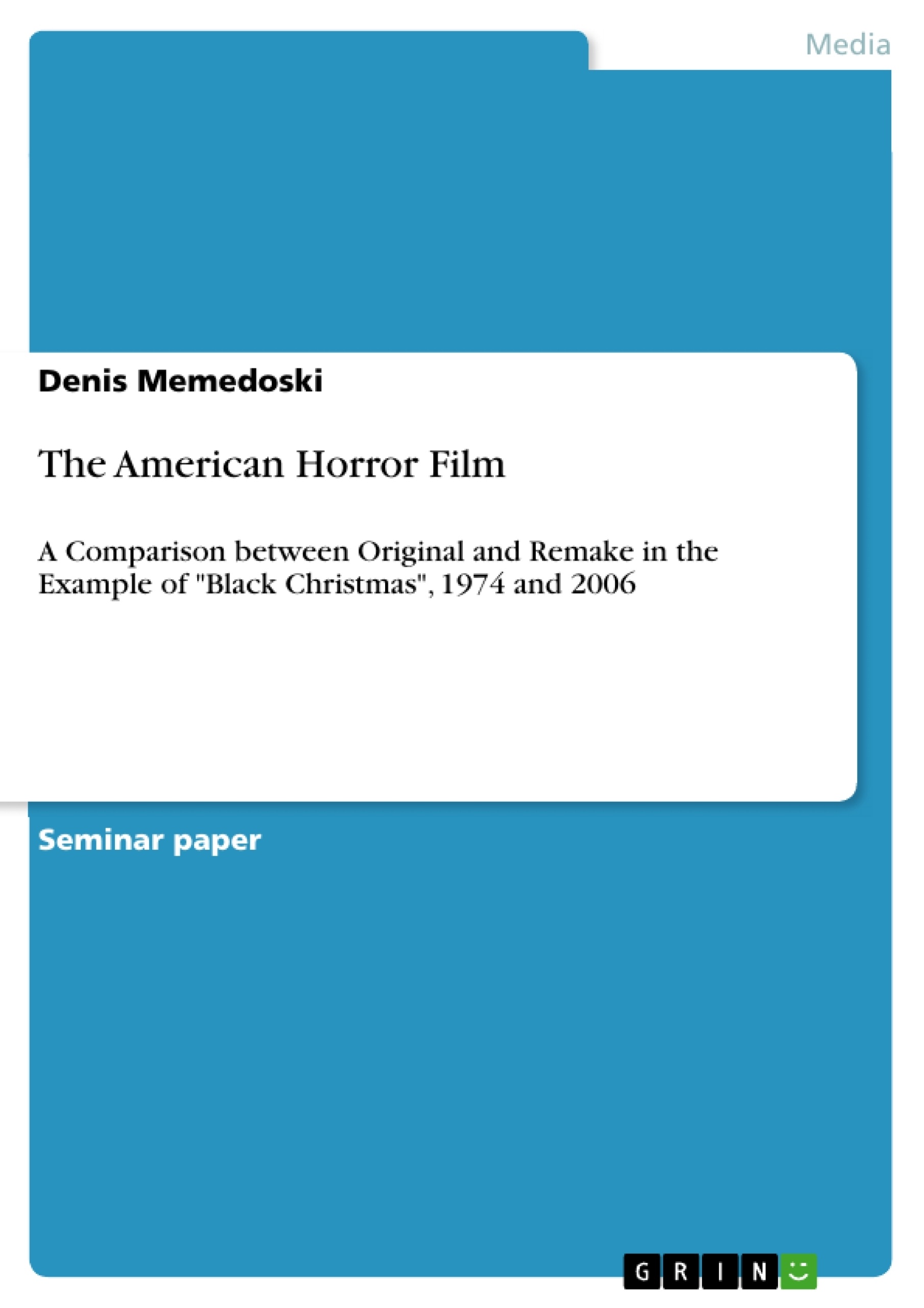Original and Remake - what are the differences, what are the similarities? What mattered then and what matters now?
The American slasher film has many influences that need to be illustrated through the history of horror cinema, and to, furthermore, understand why a horror movie is apt to turn real life issues, sensitive topics and personal predicament into metaphors for the audience to watch in theaters or on their television screens at home. Alfred Hitchcock, Mario Bava, John Carpenter and Bob Clark (whose 1974 movie Black Christmas will be the main subject) have all influenced the horror film with their visionary direction, their addressing of sensitive subjects and the uniqueness of suspense-buildup in their films.
Many filmmakers are influenced by the creative approaches the aforementioned directors took, referencing them, copying them, or even remaking their films. Movie remakes have always existed, as for instance, John Carpenter’s remake of Christian Nyby’s horror/sci-fi movie The Thing from another World (1951). However, looking back, remakes have not been as prominent as they are these days. The “remake craze” experienced a boost in 2008 and again in 2010 when thirteen remakes were released, respectively, to theaters in the United States. There are still remakes soon to be released and some soon to undergo production.
The hows and whys might deduce from cultural and social changes. Most remakes do well in theaters, audiences do not seem to mind to have the same story retold to them with flashier visuals; and movie production companies, of course, welcome the remake trend. To them it is less of a risk to remake than to try out and maybe fail at the box office with introducing a new franchise. Since audiences do not seem to mind (and the box office numbers encourage this opinion, see Figure 5), production companies are going to play it safe.
Inhaltsverzeichnis (Table of Contents)
- I. Introduction: Oh, the Horror...
- II. The History and the Fascination of the Horror Genre
- III. Comparison Original and Remake: Black Christmas, 1974 and 2006.
- IV. The Contemporary State and the Future of the Horror Film..
- V. Conclusion
Zielsetzung und Themenschwerpunkte (Objectives and Key Themes)
This term paper examines the history of the American slasher film and explores the relationship between original and remake films, particularly through the example of Black Christmas (1974 and 2006). It delves into the cultural and social contexts that influence horror films and discusses the significance of remakes in the industry. The paper also considers the future of the horror genre and its potential evolution.
- The evolution of the American slasher film
- The impact of original films and their remakes
- Cultural and social influences on horror films
- The role of remakes in the film industry
- The future of the horror genre
Zusammenfassung der Kapitel (Chapter Summaries)
- I. Introduction: Oh, the Horror...: The introduction sets the stage for the analysis by exploring the concept of original and remake films, highlighting their differences and similarities. It emphasizes the influence of significant figures in the horror genre, including Alfred Hitchcock, Mario Bava, John Carpenter, and Bob Clark.
- II. The History and the Fascination of the Horror Genre: This chapter explores the origins of the horror genre, tracing its roots back to folklore and urban legends. It discusses the influence of the “boogey man” trope and the impact of British and Italian horror films, particularly the Giallo genre, on the development of the American slasher.
- III. Comparison Original and Remake: Black Christmas, 1974 and 2006.: This chapter delves into a comparative analysis of the original and remake versions of Black Christmas (1974 and 2006). It explores how the remake updates the original story for a new generation of audiences and considers the changes made to adapt the film to contemporary sensibilities.
Schlüsselwörter (Keywords)
This paper focuses on the American horror film, particularly the slasher genre, and the relationship between original films and their remakes. Key topics include the historical development of horror cinema, the influence of Alfred Hitchcock, Mario Bava, and John Carpenter, the impact of the Giallo genre, and the cultural and social context of horror films. The paper also explores the future of the horror genre and the significance of remakes in the film industry.
- Citation du texte
- Denis Memedoski (Auteur), 2015, The American Horror Film, Munich, GRIN Verlag, https://www.grin.com/document/463601



